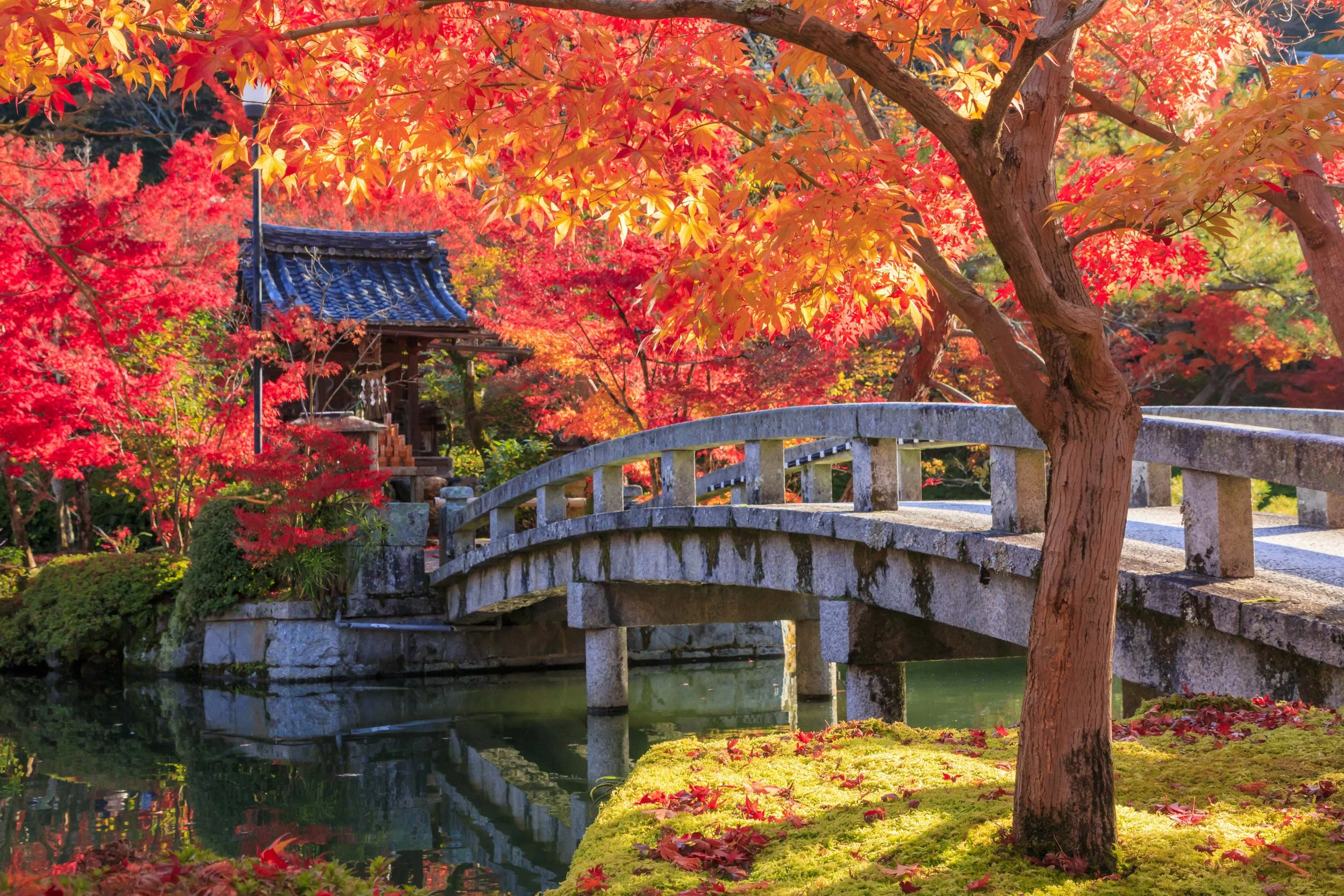Fall Foliage: Chasing the Colors of Ginkgo and Maple
Ginkgo or Maple? Choosing Japan’s Autumn Colors
When autumn sweeps through Japan, the whole country seems to glow.
Streets, gardens, parks, and mountains suddenly glow in shades of yellow and red. When I first started planning where to go, I kept wondering: should I follow the golden ginkgo trees or the fiery maple leaves?
Honestly… they’re both stunning, just in totally different ways.
Ichou (銀杏) - Golden Glow of Ginkgo
Ginkgo trees are usually the first to change color. Around early to mid-November, their fan-shaped leaves flip from green to this golden bright yellow. Walking beneath them feels like stepping into a glowing tunnel.
The tree’s Japanese name is ichou (銀杏), while “ginkgo” comes from the old Japanese pronunciation ginkyo, meaning silver apricot.
In Tokyo, the must-see spot is Meiji Jingu Gaien’s Icho Namiki Avenue. Famous for its long rows of tall ginkgo trees, which shimmer like gold when the sunlight hits. Another gem is the Showa Kinen Park Autumn Night Walk (late October to early December). At night, the ginkgo trees are lit up in soft colors, with gentle music playing in the background,and their reflections shimmering across the Japanese garden.
Ginkgo season has a serene, almost magical atmosphere. The crisp autumn air, wide streets lined with golden leaves, and the calm beauty of the trees invite you to pause, take a deep breath, and enjoy every moment.
Momiji (紅葉) - Crimson Maple Season
Maple trees usually change color a little later than ginkgo, from mid- to late November. Their leaves transform into vivid shades of yellow, orange, red, and deep burgundy, creating one of Japan’s most iconic autumn scenes.
The Japanese word momiji or kōyō (紅葉) refers both to the maple leaves themselves and the tradition of admiring them.
Kyoto, in particular, offers some of the most breathtaking views. Walking across wooden bridges, wandering through temple gardens, pausing by a quiet pond, and watching the colors ripple in the water. Feels like stepping into a living painting!
Closer to Tokyo, Mount Takao (高尾山) is a popular spot just an hour from the city. Easy hiking trails, chair lifts, and a cable car make it accessible for all, while the mountain’s slopes glow with maple leaves. You can also enjoy local specialties like tororo soba while taking in the views.
Maple season combines nature’s vivid beauty with cultural heritage, offering a warm, nostalgic atmosphere that lingers long after the leaves have fallen.
Cultural Roots: Maple Hunting vs Ginkgo Legends
The love for maples runs deep in Japanese history. The word momiji-gari (紅葉狩り), or “maple hunting,” began in the Heian period (794–1185). Back then, nobles would travel into the mountains to admire the red leaves, compose poems, and celebrate the beauty of the season.
Today, this tradition continues as kōyō, or autumn leaf viewing, with maple trees still being the most iconic symbol of Japanese autumn. In the language of flowers (hanakotoba 花言葉), maple leaves symbolize beautiful change and treasured memories, perfectly reflecting the fleeting yet unforgettable nature of autumn.
Ginkgo trees, on the other hand, symbolize resilience. Although not originally native to Japan, they became an important part of its landscapes over the centuries. Some ginkgo trees even survived the atomic bombing in Hiroshima, which is why they’re seen as trees of endurance and peace.
In hanakotoba, the ginkgo represents longevity, since these trees can live for centuries. No wonder they’ve become such a beloved part of Japan’s cityscapes.
Where You’ll Find Them





So where are you most likely to spot these trees?
Ginkgo trees, are easy, they’re city trees. You’ll find them lining big streets, parks, and public squares. They look especially striking when their golden leaves frame modern skyscrapers or old shrines.
Maples, on the other hand, are usually found in natural landscapes. You’ll come across them in traditional towns, gardens, national parks, and especially in the mountains, where the entire hillsides turn shades of red and orange in autumn, creating a softer, nostalgic atmosphere, as if you have stepped into a scene from centuries past.
So… ginkgo or maple? Honestly, you can’t go wrong with either.
Whether you are drawn to the brilliance of ginkgo or the elegance of maple, you’ll end up with memories and photos that look straight out of a dream!
If your trip timing works out, you might even get to see both! Imagine golden tunnels in Tokyo one day and fiery red temples in Kyoto the next. Dreamy, right?
The thing about autumn here is that it’s super short. Sometimes it feels like it’s over in a blink. But that’s exactly what makes it so special.
What’s Next?
So, what’s next after all that autumn magic?
Winter illuminations glittering across the cities? A hot spring getaway? Or maybe a snow adventure?
Whatever you’re into, Japan’s always got something new waiting. And honestly…
Once you’ve been here in one season, you’ll definitely want to come back for another!







